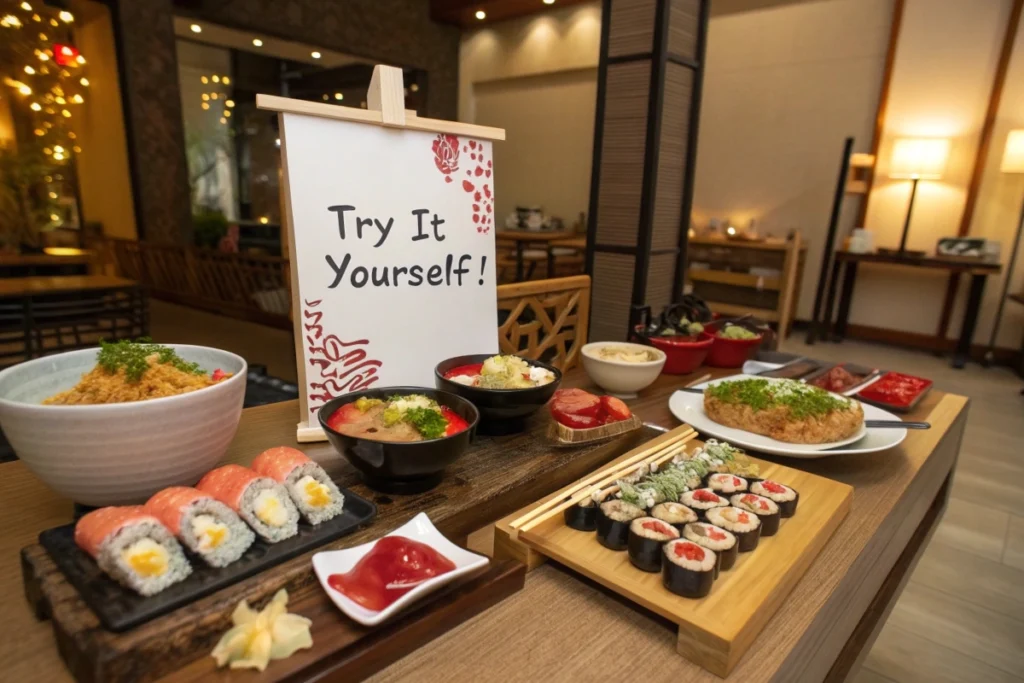Introduction
Japanese culture often delights visitors with exquisite attention to detail—especially when it comes to food. In fact, when you spot a restaurant in Japan, you might see hyper-realistic dishes on display in the window. These mouthwatering replicas are so accurate that you might be tempted to take a bite. Welcome to the fascinating world of fake food japanese kits, also known as sampuru (the Japanese term for food samples). These kits empower hobbyists, restaurant owners, and creative enthusiasts to craft their own lifelike food displays.
Not only are they a quirky addition to any home or storefront, but these japanese fake food replicas also serve practical purposes—from enticing tourists to helping servers communicate a menu’s offerings. In this in-depth guide, you’ll learn about the history of this craft, how to get started with your own kit, the vulnerabilities of wax replicas, and the best ways to care for your masterpieces over time. Whether you’re an artist at heart or simply looking for a fun new hobby, you’ll find that fake food japanese kits offer endless possibilities for expression.
Discover Japanese cooking inspiration to complement your food display hobby.
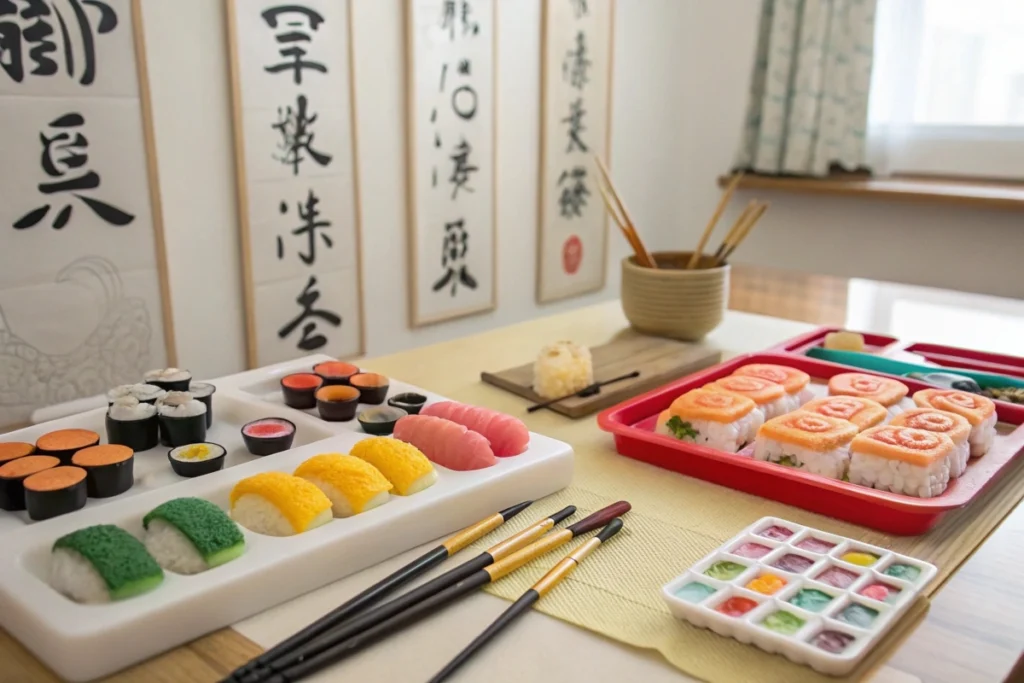
1. What Are Fake Food Japanese Kits?
Fake food japanese kits—often referred to by the Japanese term sampuru—are do-it-yourself sets designed to help you create ultra-realistic replica dishes. While modern replicas are generally crafted from vinyl, resin, or plastic, the tradition of displaying food samples in Japan dates back nearly a century. Originally, artisans sculpted each piece out of wax, using techniques that demanded exquisite craftsmanship and an unerring eye for color matching.
Today, fake food japanese kits come in a wide variety of forms. Some kits focus on iconic Japanese dishes like sushi, ramen, or tempura, while others help crafters replicate Western-style desserts or specialized items like foam-topped coffee. Regardless of the type, the main objective remains the same: to fool the eye into believing that what’s on display is the real deal.
So why the ongoing popularity? First, the tourism and restaurant industries in Japan rely on these displays to draw people into eateries. A vividly colored bowl of replica ramen or a mesmerizing parfait in the window can communicate menu items across language barriers. Second, the novelty factor has gained a huge following overseas, inspiring hobbyists to try their hand at making replica food japan style. The kits typically contain molds, liquid plastic or silicone, paints, and step-by-step instructions in Japanese (often with English translations included).
In addition, these kits make excellent gifts. For the adventurous creative, there’s something enchanting about painting on the perfect swirl of soy sauce or shading a faux shrimp tail so it looks freshly fried. The artistry behind these kits not only fosters appreciation for Japan’s culinary culture but also provides a fun, hands-on project that can be completed in an afternoon.
If you’re curious to see real Japanese desserts for reference, explore advanced Japanese sweets recipes to compare their appearance to your replica projects.
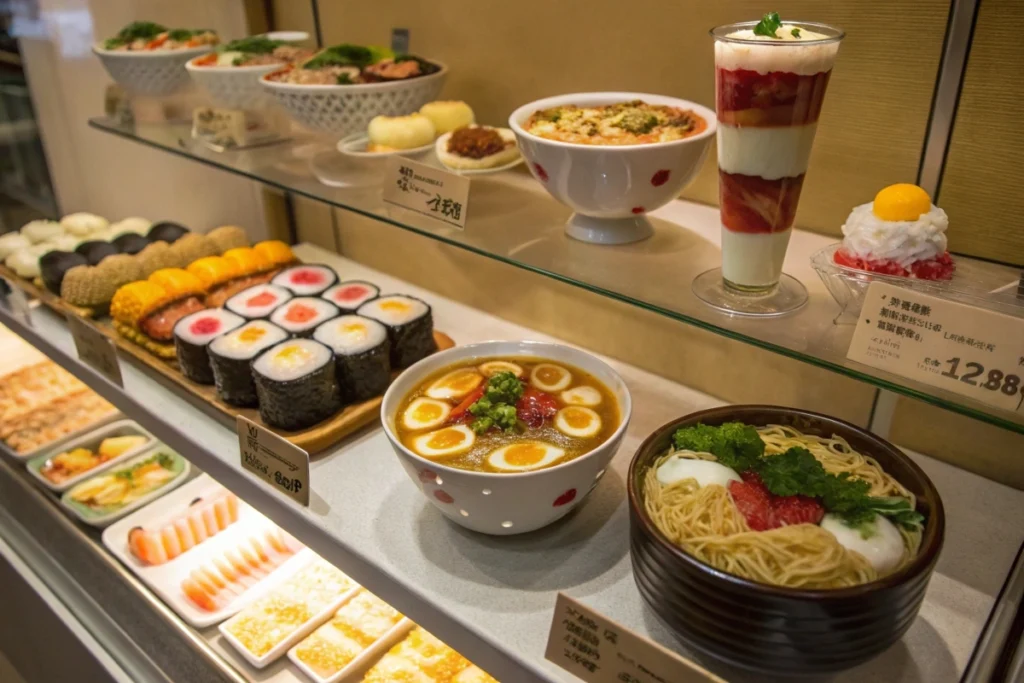
2. The Crafting Process and Techniques
Creating replicas using fake food japanese kits is both an art and a science. Most kits include a few basic components: silicone or vinyl material (which can be liquid or sheets), molds, coloring agents or paints, and sometimes finishing sprays. While each kit will vary in its instructions, the process usually involves these key steps:
- Mold Creation or Preparation: If the kit includes a mold (like a sushi piece or a lettuce leaf), you’ll simply pour your melted material into it. In more advanced kits, you might need to craft the mold yourself using clay or plaster.
- Base Shaping: After the material sets, it’s time to remove the newly formed shape. For items like fake food japanese sushi, you’d have separate pieces for the rice and the fish topping. Extra steps might include sculpting finer details like grain texture on the rice.
- Painting and Detailing: This is where the craft transforms into artistry. Layering subtle colors can bring your replica from looking “fake” to photorealistic. You might apply multiple coats of paint or use an airbrush for gradient effects. Pay attention to details like brush strokes for textures, whether you’re simulating char marks on yakitori or marbling in a steak cut.
- Assembly: If your dish has multiple components (e.g., noodles in broth, garnishes, condiments), you’ll piece these elements together in a final arrangement. Often, a resin or clear silicone might be used to simulate broth or sauces.
- Curing and Finishing: Finally, most kits require a curing period. This could be air-drying or mild heating, depending on the material. A finishing spray is sometimes applied to seal in the paint.
As with any hobby, mistakes happen. From color mismatches to air bubbles, these small hiccups are part of the learning curve. Aim to practice patience, follow instructions closely, and consider investing in higher-quality paints for more lifelike results. For an equally creative approach to real Japanese cooking, learn about Japanese vegan recipes for new perspectives.
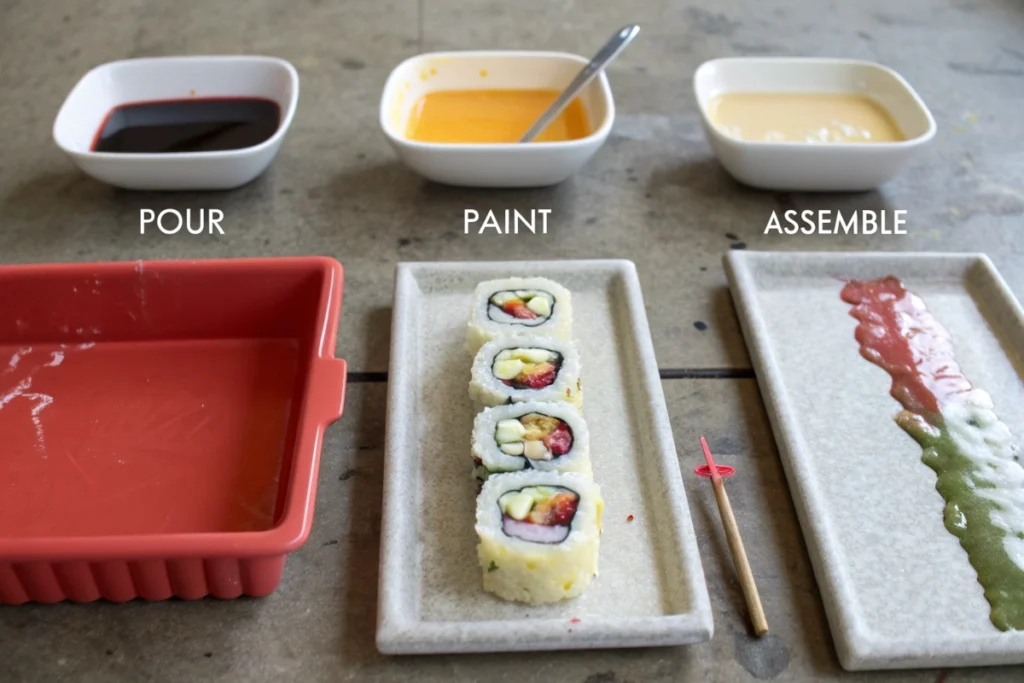
3. Why Use Fake Food Japanese Kits?
The popularity of fake food japanese kits extends far beyond just a fun weekend project. Indeed, these replicas serve multiple practical and aesthetic functions, each providing value in unique ways.
- Restaurant Displays: In Japan, it’s common to see realistic food samples outside restaurants. They help communicate menu options to tourists who may not read Japanese, making it easier for international visitors to point and order. Even outside of Japan, Japanese eateries often adopt this tradition for a touch of authenticity.
- Photography and Film: High-quality replicas are a lifesaver for photographers or filmmakers who need consistent shots. Real food wilts, melts, or changes appearance under bright lights, but fake food japanese displays remain picture-perfect throughout the shoot. This consistency can save hours of retouching or reshoots.
- Home Décor: Some enthusiasts use sampuru to decorate their kitchens or dining areas, adding a whimsical conversation piece. Imagine a hyper-realistic bowl of ramen as a permanent décor item—guests might do a double-take!
- Collectibles and Gifts: Replica food japan style items have become collectible items in their own right. Specialized kits or finished pieces featuring iconic Japanese foods—like matcha parfaits or takoyaki—can serve as unique gifts. For travelers, bringing home a fake food kit can be a memorable keepsake.
- Educational Tools: Teachers and dietitians sometimes use food replicas to illustrate portion sizes or nutritional lessons without worrying about spoilage. Visual learning enhances retention, especially for younger students.
With these uses in mind, it’s easy to see why fake food japanese kits remain in high demand. They blend artistry, function, and cultural appeal into one package that speaks to many audiences. If you’re craving a real culinary experience alongside your display hobby, try your hand at real Japanese cooking! You might even display your fake and real dishes side by side for a playful comparison.
4. Challenges and Vulnerabilities of Wax Food Replicas
Despite their charm and utility, wax and plastic replicas aren’t without their drawbacks. Many early fake food japanese kits used wax as the primary material, but wax can be prone to melting or warping if exposed to high temperatures. Modern materials like vinyl and silicone are more stable, but even these have certain limitations worth noting.
- Heat Sensitivity: Prolonged exposure to direct sunlight or heat can cause fading or, in the case of low-grade wax, minor deformations. If you’re placing your japan fake food display near a sunny window, be sure to select higher-grade materials or at least rotate items periodically.
- Fragility: Although plastic and silicone are generally durable, thin pieces—like delicate garnishes or small noodles—can snap off if handled roughly. Transporting displays or using them as props requires a little extra caution.
- Color Fading: UV light can degrade paints and dyes over time. This issue is especially prevalent with cheaper kits that might use lower-quality colorants. Using a protective UV spray can mitigate this, but it’s a step many beginners overlook.
- Cleaning and Dust: These replicas often have intricate nooks and crannies where dust collects. Unlike real food, you can’t simply wipe away sauce or water. A gentle brush or canned air might be necessary. For items sealed in resin, you can typically wipe them with a soft, damp cloth—just avoid vigorous scrubbing that might peel off paint.
- Realism vs. Cost: More realistic replicas often come with a higher price tag, whether in the kit’s components or the paints. Balancing cost and realism can be a challenge for hobbyists on a tight budget.
Understanding these vulnerabilities ensures that you care for your replicas properly, extending their lifespan and maintaining their visual allure. If you’re traveling to Japan and want to witness a broad array of displays firsthand, visit Tokyo’s official tourism site to find neighborhoods known for their culinary showcases. Observing genuine fake food japanese artistry in person can offer inspiration and practical tips on setup, lighting, and arrangement.
5. Choosing the Right Kit for Your Needs
Selecting the perfect fake food japanese kits depends on your level of expertise, budget, and the specific type of dish or visual effect you aim to create. Whether you’re a newbie or a seasoned crafter, here’s how to narrow down your options:
- Starter Kits vs. Advanced Sets
- Starter Kits: Ideal for beginners, these often focus on simple items like sushi or small desserts. They include pre-made molds, basic paints, and easy-to-follow instructions, making them low-risk and less time-consuming.
- Advanced Sets: Designed for those who want a high degree of customization. You might receive silicone sheets or raw materials to craft everything from scratch, including molds. These require more tools and a deeper skillset but yield incredibly detailed replicas.
- Cost Considerations
- Budget kits might use lower-quality paints or fewer materials, which could lead to less realistic results. However, they’re great if you just want to test the waters. Mid-range kits usually balance cost and quality, while premium kits focus heavily on realism and might include airbrush-compatible paints or specialized tools.
- Where to Buy
- Online Retailers: E-commerce platforms often stock a wide range of replica food japan kits, along with user reviews and star ratings that can help you decide.
- Specialty Craft Stores: In Japan, some shops are entirely dedicated to sampuru. Internationally, you might find niche retailers or local art-supply stores carrying a limited selection.
- Direct from Artisans: Some artisans or smaller companies sell kits directly through their websites, ensuring you get a more personalized product.
- After-purchase Support
- Look for kits with robust online communities or instructional videos. These resources can be invaluable if you hit a snag during the crafting process.
- Should you decide to scale up, check if the same brand offers expansion packs—like additional paint sets or specialized molds for items like ramen noodles or taco fillings.
For insights on Japan’s broader trade and craft industries, consider checking out the Japan External Trade Organization (JETRO) for an overview of regional offerings and market trends.
History and Context of Fake Food Japanese Kits
The story of fake food japanese kits begins in the early 20th century, when Japan’s restaurant scene was blossoming. Tourists, both local and foreign, found menus puzzling—especially if they couldn’t read Japanese characters. To solve this, artisans began producing life-sized wax models of popular dishes so customers could simply point at what they wanted. This practice quickly gained momentum and became an art form called sampuru, derived from the English word “sample.”
Early Beginnings: Wax to Plastic
Early fake food artisans were highly skilled sculptors who meticulously colored each piece by hand. They used wax because it was relatively easy to mold and manipulate; however, the material proved vulnerable to heat and sunlight. Over time, these wax samples would fade, warp, or even melt, forcing artisans to frequently create new displays.
In the post-war period, demand for fake food japanese soared as the country rebuilt its economy. Street-side eateries and high-end restaurants alike realized that vivid food samples could attract a wider audience. By the 1960s, manufacturers began experimenting with plastics and vinyl, which were more durable than wax. These new materials maintained a realistic shine and color consistency that wax often lost.
Modern Innovations
With technological advancements, artisans became able to capture finer details. Clear resins, for example, simulate soup broths or jelly-like desserts more accurately than ever before. Airbrushing techniques added realistic shading to fish fillets or char marks to grilled items. By the 1980s, replica food japan had grown into a multi-million-dollar industry, with specialty shops devoted entirely to these pieces in places like Tokyo’s Kappabashi district.
Today, the craft has gone global, with fake food japanese kits accessible to hobbyists in every corner of the world. Many tourists in Japan attend workshops where they create their own wax or plastic replicas, often choosing to replicate iconic dishes like tempura or sundaes loaded with fruit and whipped cream.
Cultural Significance
Beyond mere novelty, these replicas embody an important aspect of Japanese hospitality—ensuring that diners know exactly what they’re ordering. It removes the guesswork, bridging language barriers and cultivating comfort. Many modern Japanese craftspeople still approach sampuru with the mindset of an artisan, blending traditional sculpture techniques with modern materials and technology. The result is an ever-evolving art form that continues to amaze visitors and locals alike.
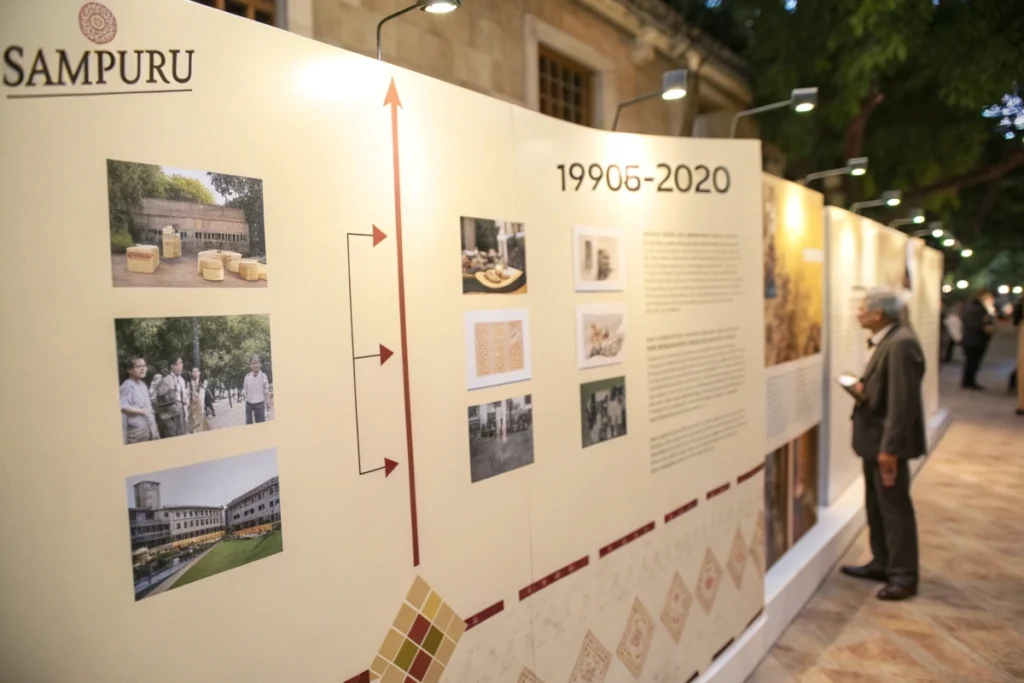
Practical Examples and Use Cases
Now that you know the background, let’s explore how fake food japanese kits fit into everyday life. Whether you’re an entrepreneur or a crafting enthusiast, these examples illustrate the versatility of sampuru.
Scenario 1: Restaurant Owners
Imagine you own a small sushi restaurant in a bustling city. Many tourists pass by daily, but language differences can cause confusion. By displaying a variety of japanese fake food sushi rolls in the window—each labeled with simple descriptions—potential customers can see exactly what they’ll get. This clarity leads to more walk-ins, fewer misunderstandings, and happier diners overall.
Scenario 2: Hobbyists and DIY Enthusiasts
Some people simply love crafting, and replica food japan sets present a unique challenge. Whether you’re replicating a stylish fruit parfait or a savory ramen bowl, these kits let you unleash creativity. Once finished, you can display them at home, gift them to friends, or even sell them online. Each project offers a chance to hone your painting and sculpting skills.
Scenario 3: Souvenir and Gift Shops
Japan’s souvenir shops are brimming with smaller fake food japanese kits. Tourists often pick up these mini sets to bring home as an unusual keepsake. From keychains shaped like a bowl of rice to phone charms resembling tempura, the novelty factor makes them perfect conversation starters. Plus, they’re lightweight and easy to pack, eliminating the worry of spoilage or breakage.
Whether you’re leaning toward the professional or personal side, fake food japanese kits open up opportunities for creativity and self-expression. Speaking of creativity, if you’d like to delve into real Japanese cooking, try this Japanese chicken fried rice recipe for a delicious homemade meal. You might even set your finished fake food beside the real dish for a fun side-by-side comparison!
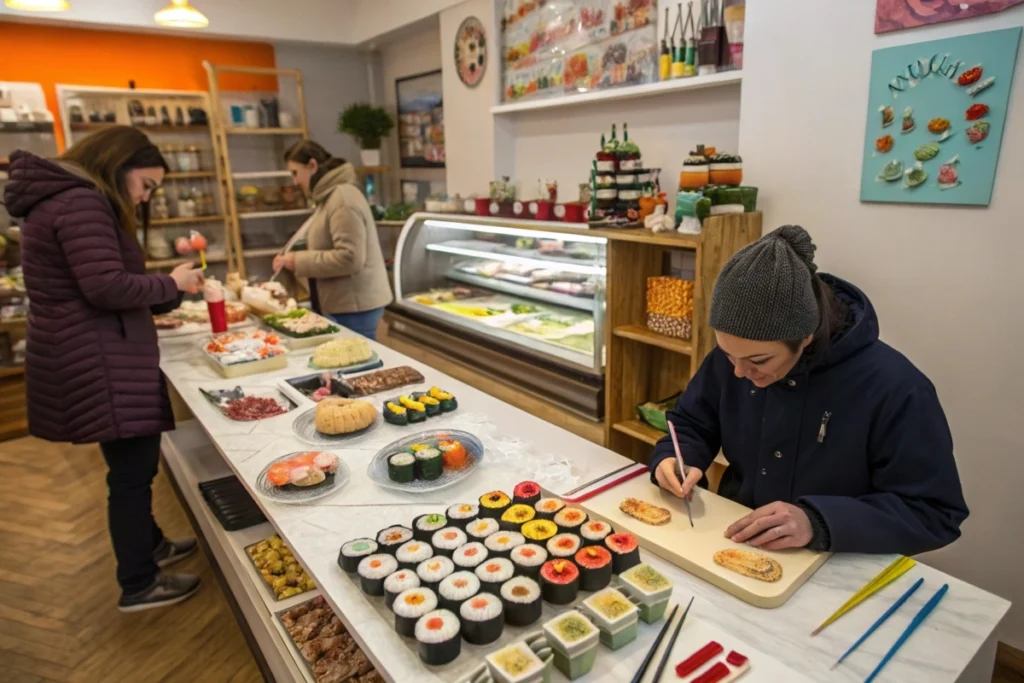
FAQs
Below, we address some commonly asked questions about fake food japanese kits, covering both the technical aspects and cultural nuances of sampuru.
- What is Japanese fake food called?
It’s generally referred to as sampuru, from the English word “sample.” Sampuru includes everything from sushi replicas to plastic parfaits, all carefully designed to mimic real dishes. - What is the Japanese art of making fake food?
The art of making fake food is essentially the craft of sampuru. It combines sculpture, painting, and sometimes even technology like 3D printing to produce ultra-realistic dishes. Many artisans treat it as a specialized trade requiring years of practice. - What are the vulnerabilities of using wax food replicas?
Wax replicas can melt or deform under high heat and direct sunlight. They’re also more prone to color fading over time. That’s why many modern fake food japanese kits use plastic, vinyl, or resin to achieve both durability and realism. - What is the plastic food outside Japanese restaurants?
Those plastic displays are also part of the sampuru tradition, designed to show customers what a menu item looks like. They are especially helpful in areas with high tourist foot traffic, allowing people to point out what they want without worrying about language barriers. - Is it difficult to make replica food that looks realistic?
It can be challenging, especially for novices. Techniques like airbrushing, precise color mixing, and mold crafting require practice. However, most kits are beginner-friendly and include step-by-step instructions. Over time, you can refine your skills to produce highly convincing pieces. - Where can I buy fake food japanese kits outside of Japan?
Online retailers often carry these kits, and some local art supply or hobby stores may have a selection as well. Look for brands with good reviews and consider purchasing from specialty stores if you want more advanced materials. - How can I maintain or clean my replicas?
Gently dust them with a soft brush or use canned air to remove debris from tight crevices. If they have a resin coating, you can wipe them lightly with a damp cloth, but be cautious about scraping the painted surface.
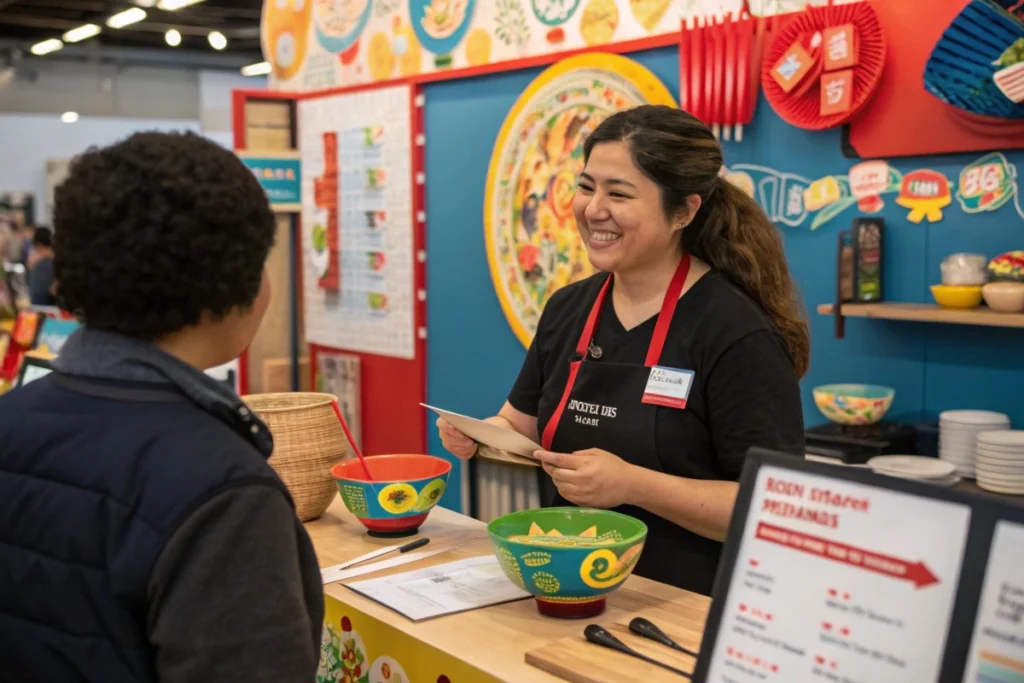
Conclusion
Fake food japanese kits blend creativity, cultural heritage, and hands-on artistry into a single, captivating pastime. They pay homage to Japan’s long-standing tradition of sampuru while appealing to a modern global audience. From restaurant displays to home décor, these replicas serve a purpose well beyond mere novelty, bridging language gaps and sparking delightful conversations among friends and visitors.
If you’ve been intrigued by the lifelike sushi or ramen bowls displayed in storefronts, why not try your hand at crafting your own miniature masterpiece? You can start with a beginner-friendly kit and gradually hone your painting and sculpting techniques. In doing so, you’ll gain a deeper appreciation for the artisans who make these works of art, as well as for Japanese food culture itself.
When you’re ready for a culinary adventure in the real world, discover how to cook real Japanese meals at home. Whether you’re plating a steaming bowl of ramen or painting a plastic version, each experience connects you to Japan’s innovative food scene in its own unique way. So, pick up a kit, gather your supplies, and immerse yourself in the fascinating world of fake food japanese kits—you’ll be amazed at what you can create!
